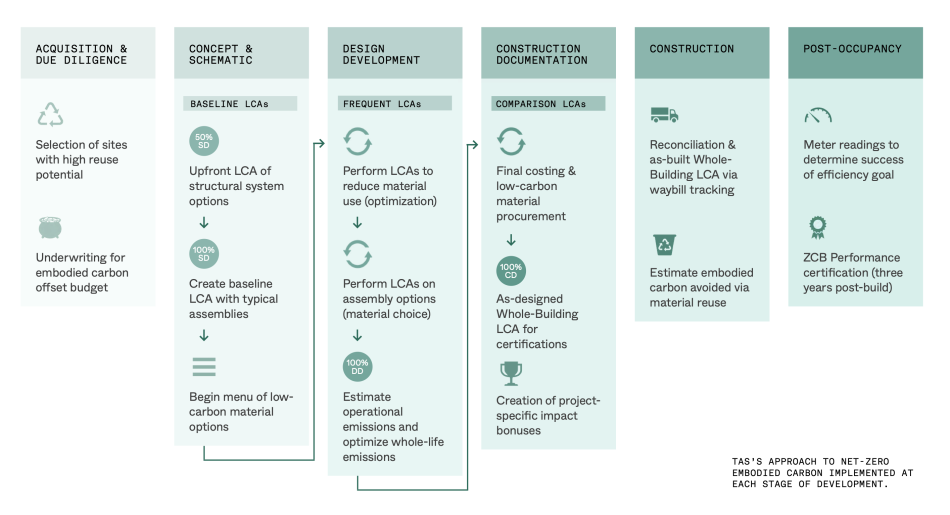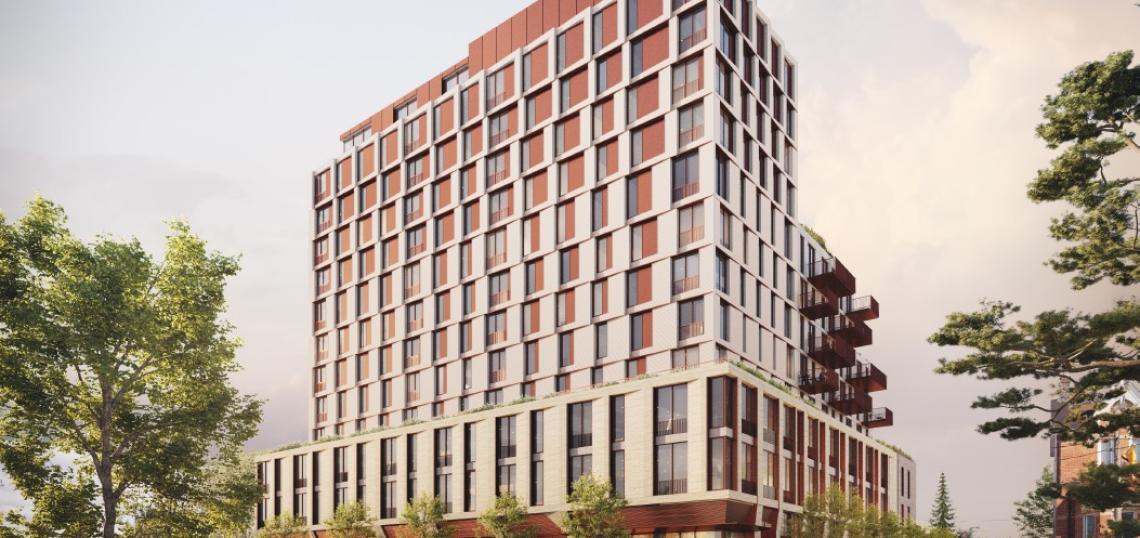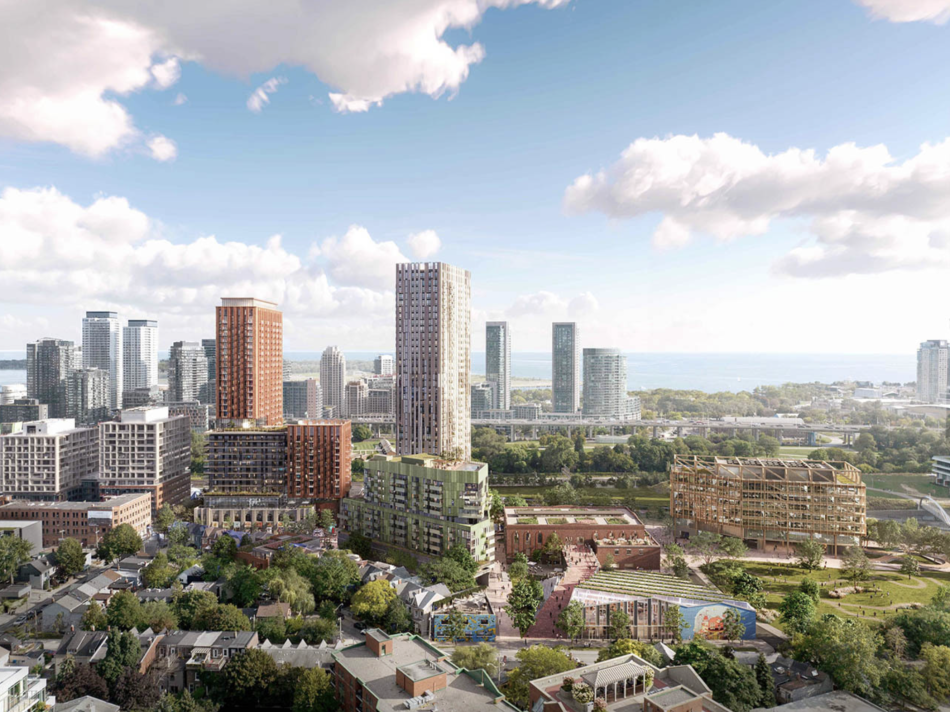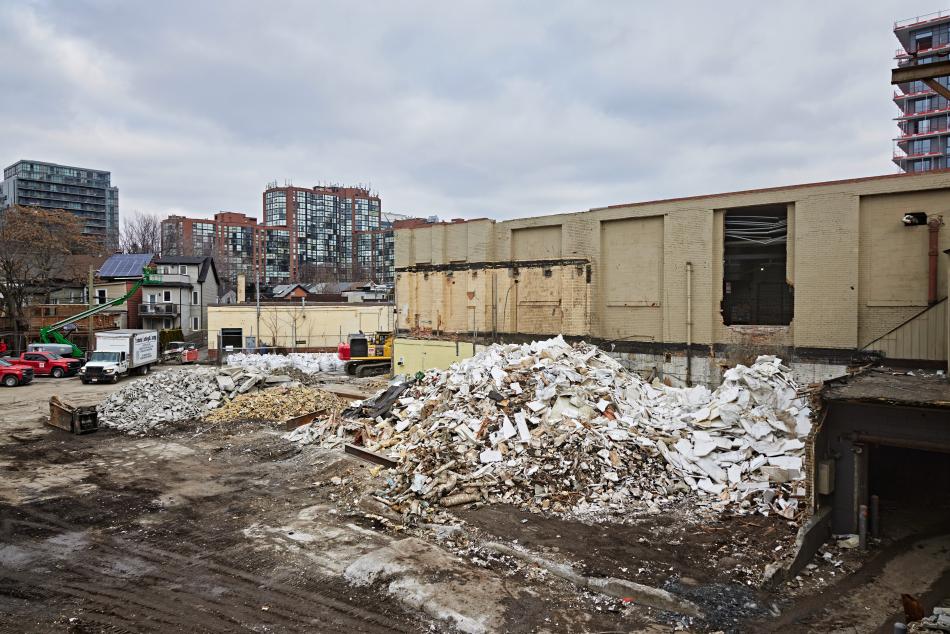Sustainable construction and development have become increasingly vital in efforts to preserve and protect the environment for future generations. This approach integrates environmentally friendly practices into every aspect of the construction process, from design to completion. By adopting sustainable practices, cities can significantly decrease carbon emissions, minimize the depletion of natural resources, and promote healthier living environments.
Toronto needs to house 3 million new people by the year it reaches net-zero — referring to the balance between the amount of greenhouse gas (GHG) that is produced and the amount that is removed from the atmosphere. It can be achieved through a combination of emission reduction and emission removal. Building more while polluting less is among the greatest challenges facing urban centres today. With developers responsible for the vast majority of housing construction, they are in a unique position to implement a circular economy at scale.
TAS is an unconventional impact company that uses real estate as a tool to drive profit and purpose. They are an industry leader in real estate impact investing, pursuing opportunities that create value for investors while generating positive and measurable social and environmental impact. According to TAS’ most recent Annual Impact Report, climate-related real estate is a win-win and comes with a number of benefits including lower operational costs, improved resale value, healthier communities, and greater community resilience. However, achieving net-zero with new development is a less straight-forward approach.
Urbanize Toronto recently asked Mazyar Mortazavi, President & CEO of TAS, about the challenges of achieving net-zero with new construction.
"Unless you build a building out of rocks and twigs sourced directly from the site itself, it is impossible to make a building without releasing some emissions into the atmosphere.”, says Mortazavi, "Every material that makes up a new building was extracted from the earth using machines that pollute; sent to a factory that’s powered by energy; taken by transport vehicle to the building’s site; and installed with machines that use energy. These types of ‘embodied carbon’ emissions can’t be avoided, so the only way to get to Net-Zero emissions is by purchasing offset or removal credits, like ones that plant trees or invest in renewable power in areas that are oil-reliant...The problem is that to house people, we build buildings today, and those emissions end up impacting the atmosphere for years or decades before they’re “undone” by the offsets we buy. Carbon removal credits alone are not sufficient if we build big, materially wasteful buildings and do nothing but buy offsets. Instead we must lower the emissions that go into the atmosphere from the get-go, so that the amount we have to offset is less and less harm is done.”.
 TAS' approach to Net-Zero embodied carbon is implemented at every stage of development.Image Credit: TAS
TAS' approach to Net-Zero embodied carbon is implemented at every stage of development.Image Credit: TAS
As part of TAS’s efforts to measure and reduce whole-life carbon, they have begun using Life-Cycle Analysis (LCA) software to benchmark embodied carbon across eight new developments. This includes developing a Whole-Life Net-Zero Framework, which they have began piloting at their 880 Eastern Avenue project. Located in Leslieville, the recently approved development will be Toronto’s first net-zero mid-rise residential building.
Designed by SvN Architects, the 12-storey development will include integrated geothermal heating and cooling, along with concrete made with lower carbon emissions, helping ensure the building will minimize its environmental impact. The building will also include design features that enhance well-being and livability, such as units with more light and ventilation.
TAS is also putting an extensive Net-Zero Framework into practice at their flagship development at 2 Tecumseth Street, a large mixed-use project in Toronto’s Fort York neighbourhood.
"We began by reusing as much structure and material from the existing site as we could, then worked with our consultants to reduce the amount of material that went into the design, and finally specified low-carbon versions of that material. Using this method, we were able to divert 92.56% of total demolition waste, including 62.16% waste that will stay on site and be repurposed into the landscape – that means that 62% of waste will also never need to be moved using gas-emitting trucks." says Mortazavi. "We’re now also underwriting a carbon budget into our pro formas during acquisition, that our design and engineering consultants can use to optimize embodied and operational emissions to achieve the lowest whole-life carbon footprint we can.”.
Reducing the carbon footprint of buildings has become top of mind in cities around the world. By implementing a Net-Zero Framework, developers like TAS can significantly minimize the environmental impact of construction and operation throughout the entire building lifecycle.
"Our industry is responsible for almost 40% of worldwide carbon emissions." says Mortazavi, "For cities around the world to halve their carbon footprint by 2030 and reach Net-Zero after that, we cannot work in silos. Decarbonization is a process, and we’re learning a lot and will continue to learn more. It’s our collective responsibility to share what we know with the broader industry, and lead where we can towards a sustainable future."
...
For more information on TAS and Net-Zero, read their Annual Impact Report.











